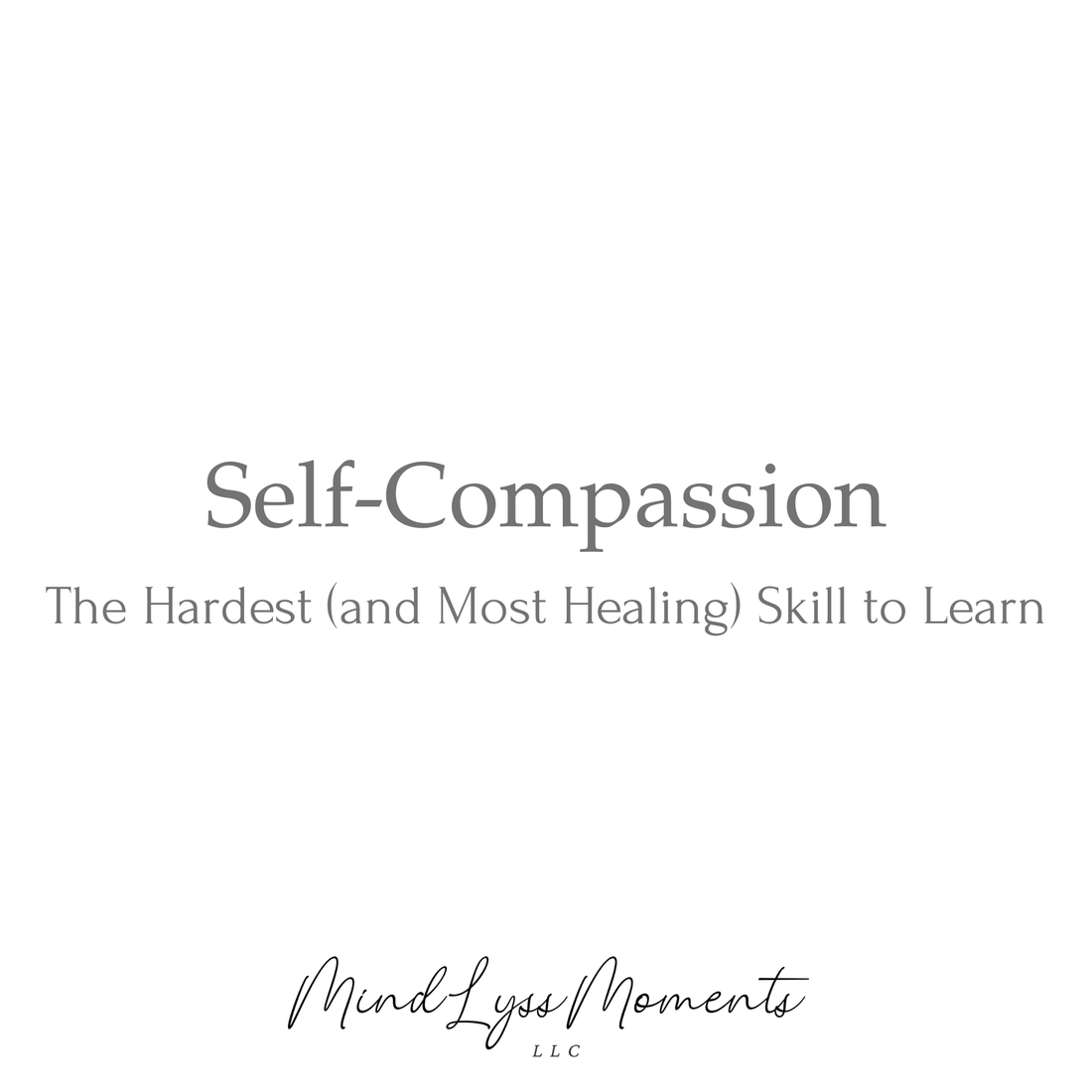If you’ve ever comforted a friend through heartbreak, encouraged a client through self-doubt, or reminded someone that one bad day doesn’t define them — you already know how to be compassionate. But when it comes to extending that same care inward, most of us hesitate. We overanalyze, criticize, and hold ourselves to standards we’d never place on anyone else.
Self-compassion isn’t about indulgence or avoidance. It’s about creating a gentler inner world — one that recognizes humanity in imperfection, and healing in kindness. And yet, it remains one of the hardest skills to master.
Why Self-Compassion Feels So Difficult
For many, self-compassion feels unnatural because we’ve learned to equate it with weakness or complacency. We think:
“If I’m kind to myself, I’ll lose my edge.”
“If I forgive myself, I’m letting myself off the hook.”
In truth, the opposite is true. Harsh self-criticism activates the body’s threat response — releasing cortisol and adrenaline, keeping us stuck in cycles of shame and fear. Compassion, on the other hand, activates the parasympathetic nervous system — the body’s natural calming mechanism. It allows us to regulate emotions, stay grounded, and actually do better moving forward.
In short, self-compassion is not permission to stop growing — it’s the fuel that allows growth to happen sustainably.
What Self-Compassion Really Means
Dr. Kristin Neff, a leading researcher on self-compassion, defines it through three core components:
1. Self-Kindness – Speaking to yourself the way you would to someone you care about.
2. Common Humanity – Recognizing that suffering and imperfection are shared human experiences — not personal failures.
3. Mindfulness – Observing thoughts and emotions without judgment or over-identification.
When these elements intertwine, they create a foundation for healing that’s rooted in understanding rather than avoidance.
How to Practice Self-Compassion in Real Life
Like any therapeutic skill, self-compassion takes practice, not perfection. Here are a few ways to start:
1. Notice the Voice Within
Begin by tuning in to your inner dialogue. Would you say those words to a friend? If not, pause — and rephrase. Try swapping, “I can’t believe I messed that up,” with “Everyone makes mistakes; I’m still learning.”
2. Ground in the Present
When your mind spirals into self-blame or anxiety, gently anchor yourself through the senses. Notice your breath. Feel your feet on the ground. Offer a quiet affirmation: “I am safe. I can start again.”
3. Name What Hurts — Without Judgment
Pain demands to be acknowledged. Instead of minimizing it, validate your own feelings. Say, “This is really hard right now,” or “Of course I feel overwhelmed.” Naming emotion opens the door to regulating it.
4. Celebrate Small Wins
Self-compassion isn’t only for the hard moments — it’s also recognizing progress. Notice the times you set a boundary, took a break, or spoke up for yourself. That’s compassion in motion.
Why It’s So Healing
When we practice self-compassion, we create an internal space that mirrors what we offer others — safety, empathy, and understanding. This shift supports emotional regulation, resilience, and long-term mental wellness.
For clients, it fosters trust and vulnerability. For clinicians, it protects against burnout. And for everyone, it allows healing to happen from the inside out.
A Gentle Reminder
Self-compassion doesn’t mean you’ll always feel good — it means you’ll stay kind, even when you don’t.
It’s not about perfection; it’s about patience.
It’s not about avoiding accountability; it’s about meeting yourself with empathy as you learn.
Healing doesn’t begin when everything feels calm — it begins the moment you stop treating yourself like the enemy.
Closing Reflection
Next time you notice that critical inner voice, pause. Ask yourself:
“What would I say to someone I love, standing in my shoes?”
Then say that — to yourself.
Because self-compassion isn’t just a therapeutic tool. It’s a lifelong practice in remembering that you, too, deserve gentleness.

